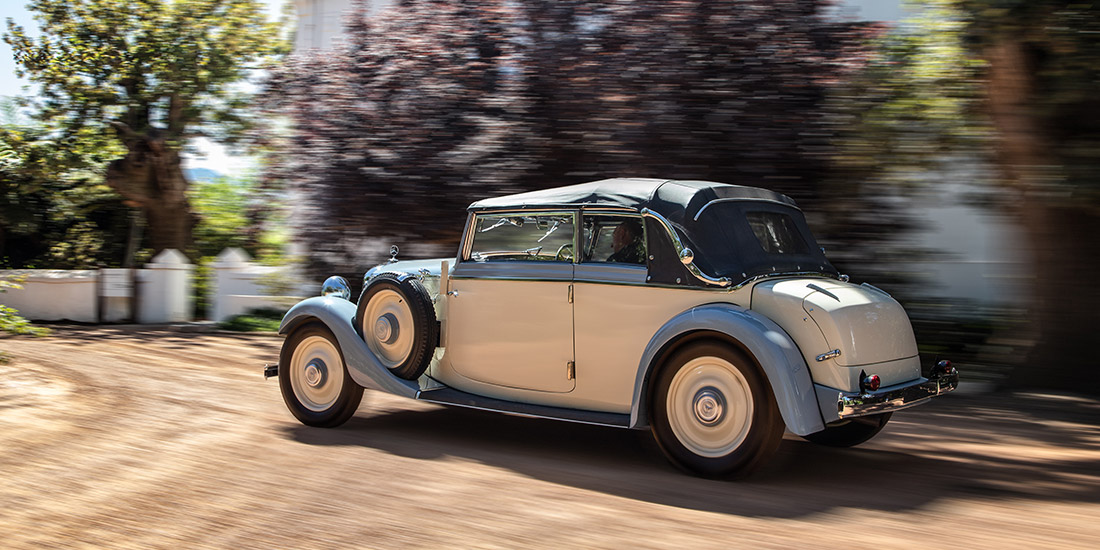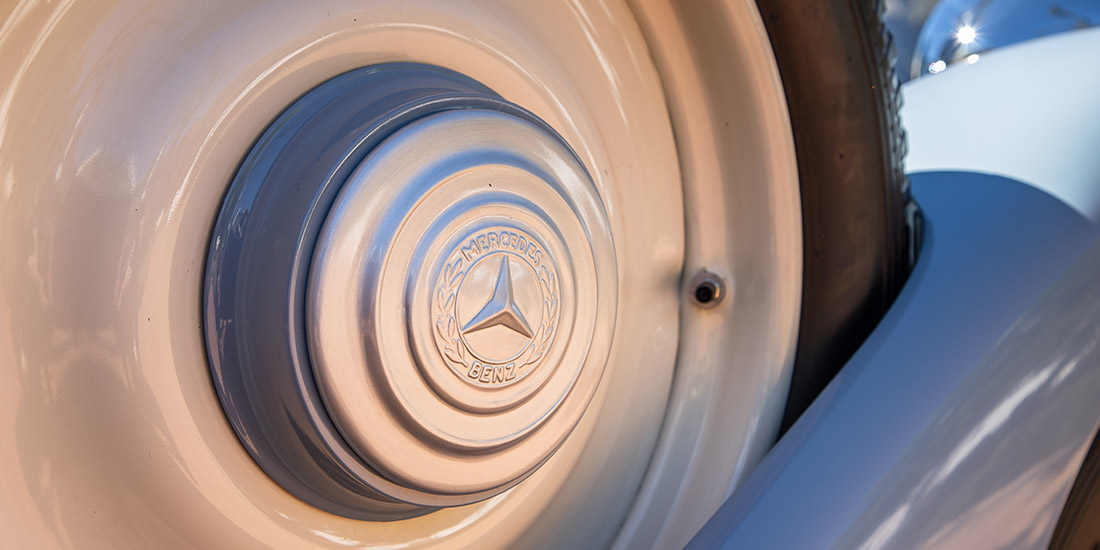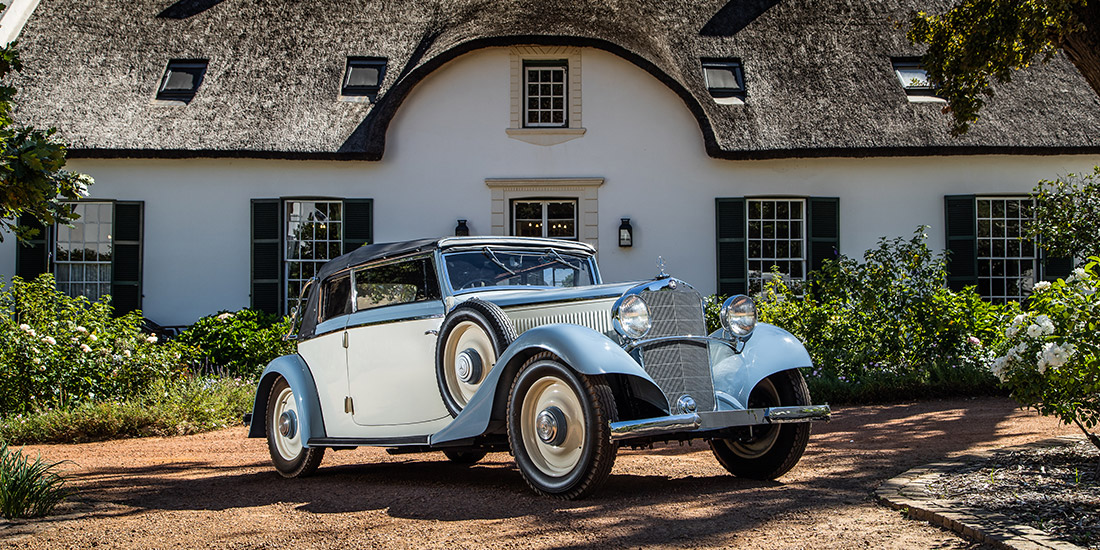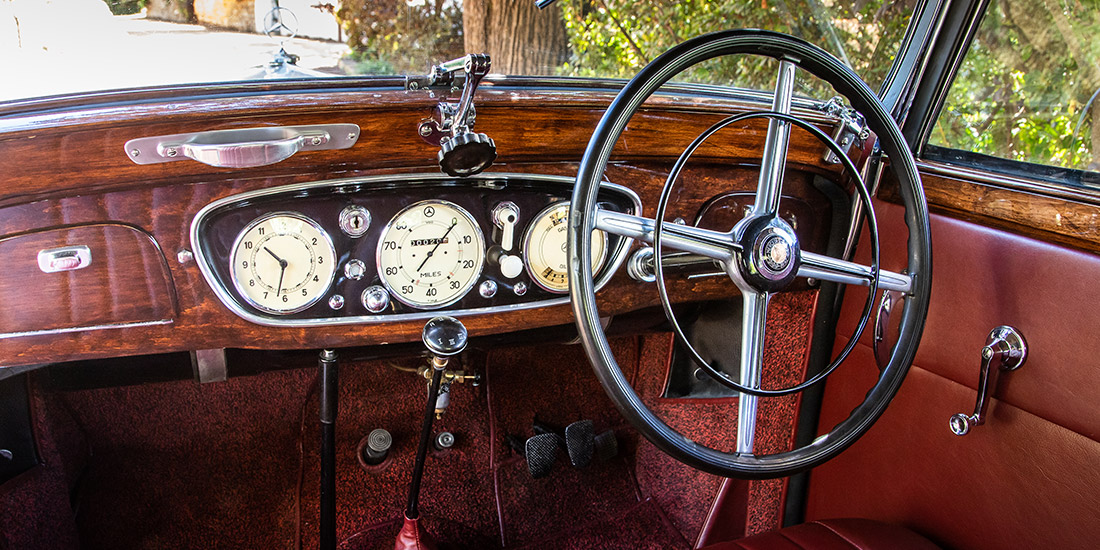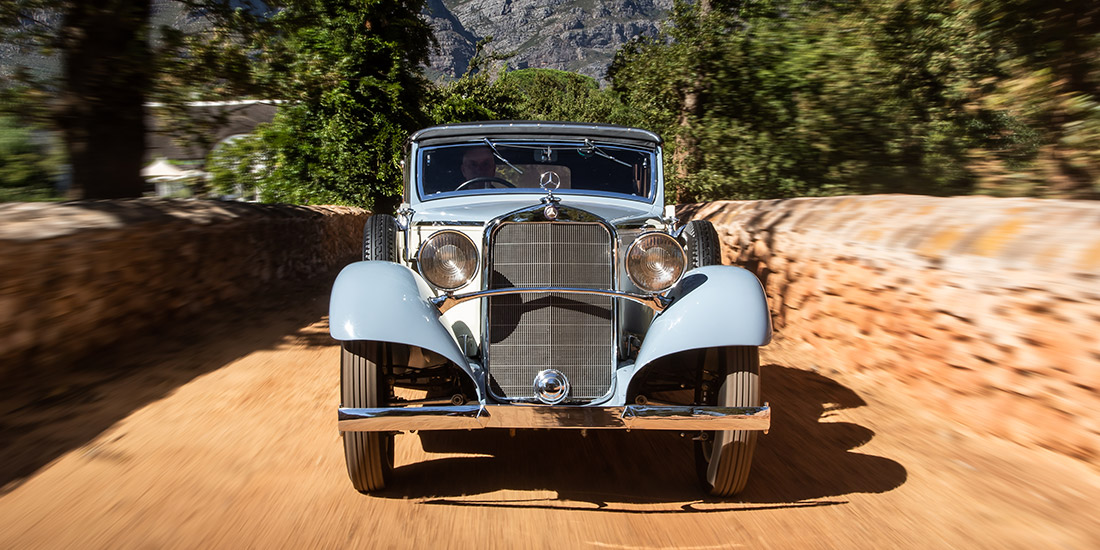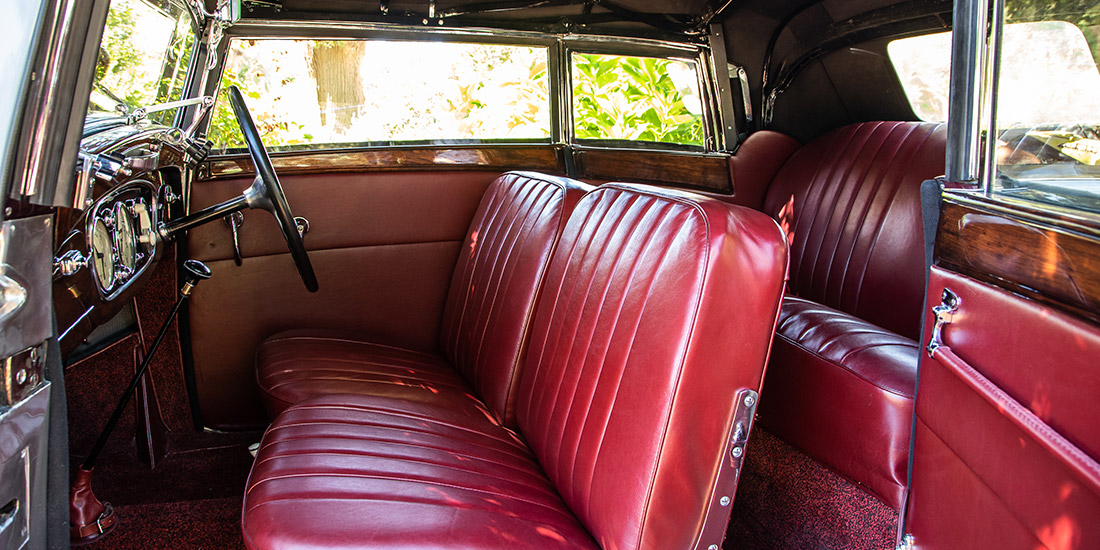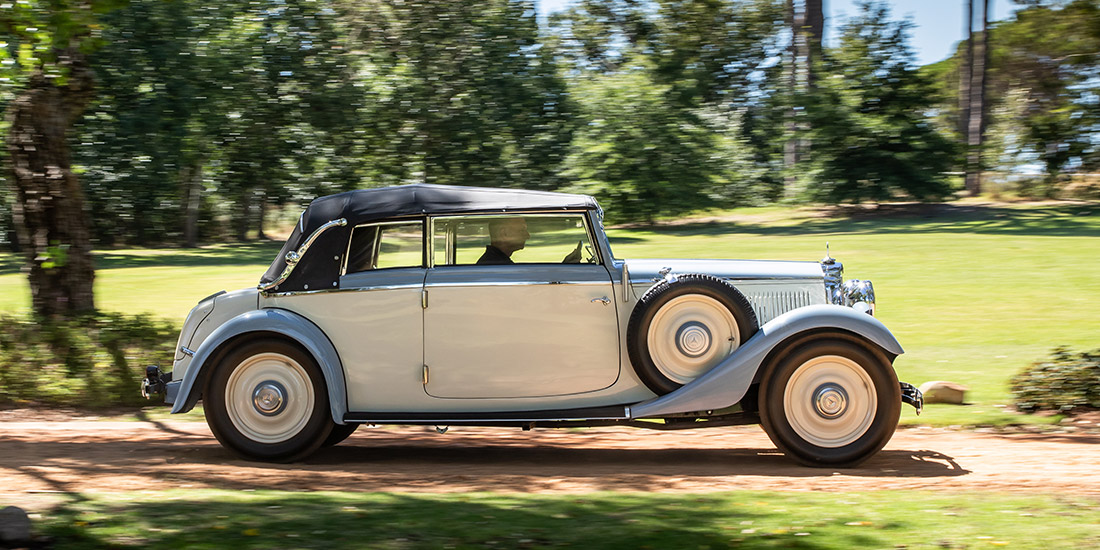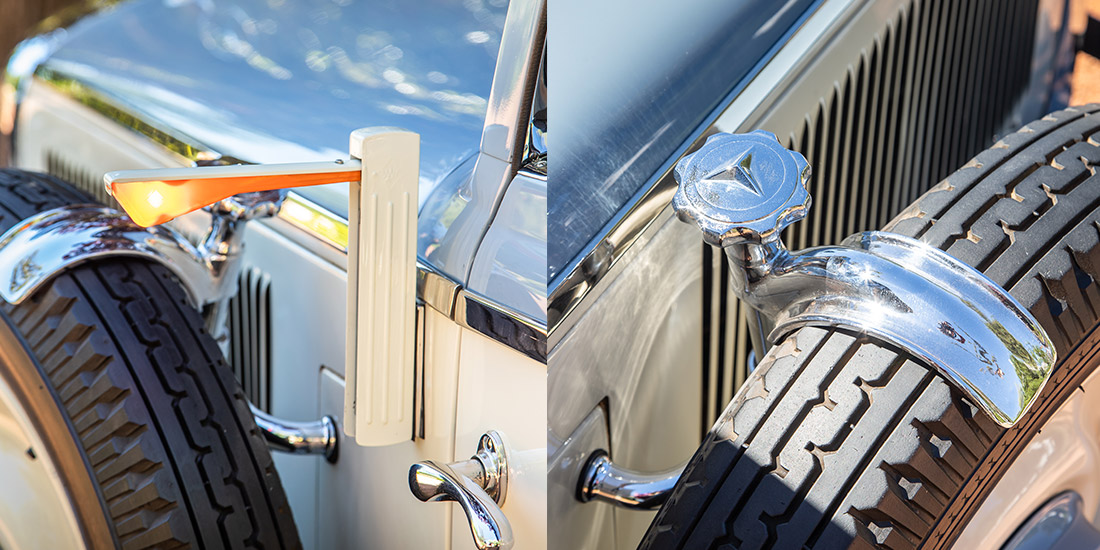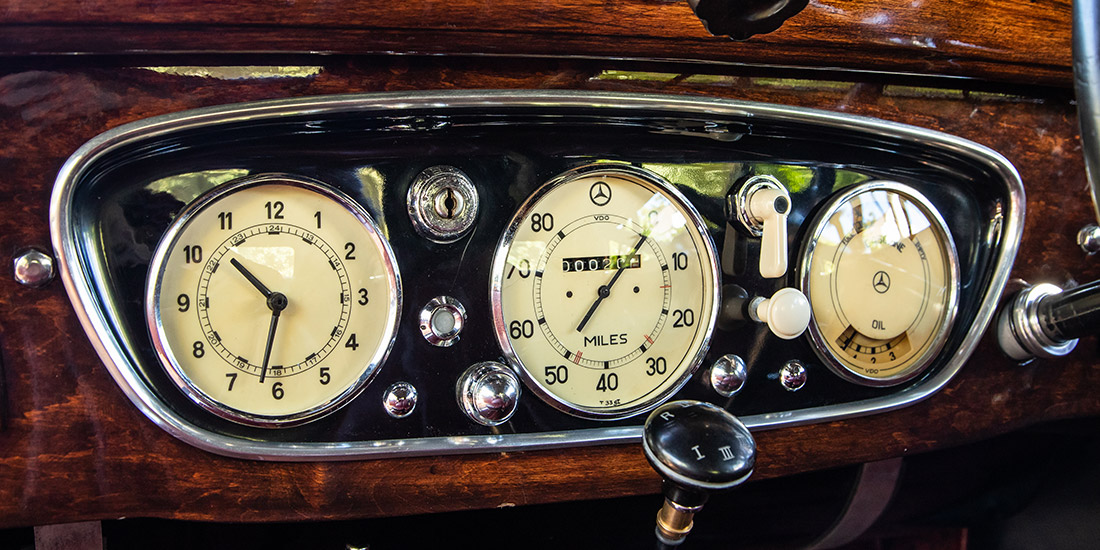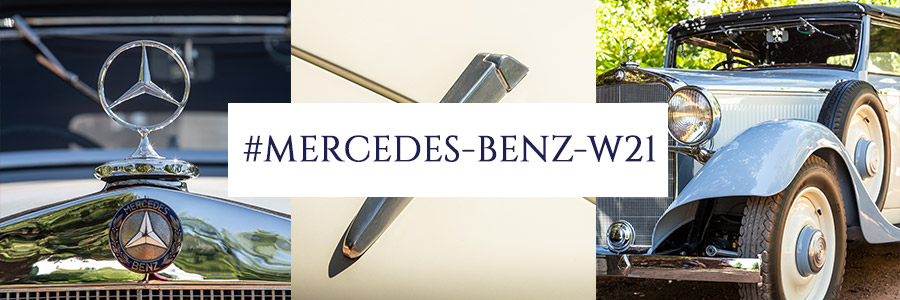INTRODUCING THE
Mercedes-Benz W21
The Mercedes-Benz (Type W21) 200 was launched at the International Motor and Motorcycle Show in Berlin in February 1933. It was the second of chief designer Hans Nibel’s new models that would form the mainstay of Mercedes-Benz production in the difficult Depression years of the mid-1930s. The car was fundamentally a slightly larger, more powerful replacement of the (W15) 170. The front axle was suspended on transversely-mounted upper and lower leaf springs, with swing axles and coil springs at the rear. Hydraulic drum brakes were fitted all round.
Initially, the choice of body styles was limited, but in February 1934 a significant revamp took place. Along with a subtle reshaping of the radiator, a 350 mm-longer wheelbase chassis was introduced and the model range increased to include no less than three different cabriolets. This car is a 1934 Cabriolet B model and benefits from the longer wheelbase1934 Cabriolet B, that allowed for spare wheels to be housed in the fenders on both sides close to the exposed indicator arms. It was originally acquired by the Rembrandt Corporation in 1979 before becoming part of the Heidelberg Motor Museum, which, in turn, was the foundation of FMM’s collection.
Top speed
95 km/h
Transmission
Three-speed plus overdrive 4th
Power
30 kW at 3 600 r/min
Engine
1 961 cm3 inline-6, side-valve
TECHNICAL
SPECIFICATIONS
Year |
1934 |
Country of Origin |
Germany |
Engine Type |
1 961 cm3 inline-6, side-valve |
Power Output |
30 kW at 3 600 r/min |
Transmission Type |
Three-speed plus overdrive 4th |
Braking System |
Hydraulic drum brakes |
Top speed |
95 km/h |




